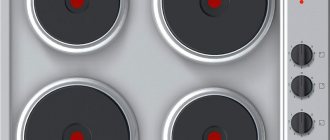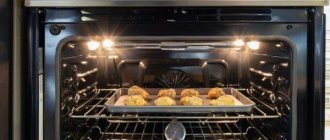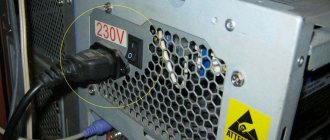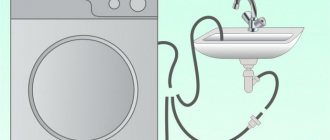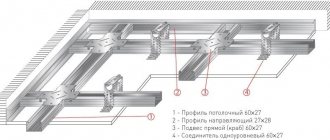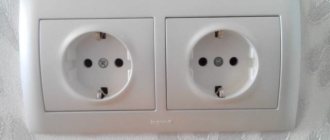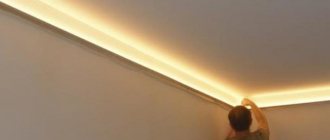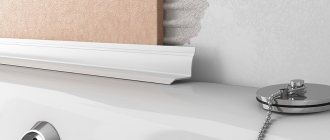An induction built-in hob is considered one of the safest appliances for cooking, when working with which burns on the working surface of the panel are completely excluded. In addition, induction cooktops have several advantages over electric cooktops. This includes ultra-fast heating, economical energy consumption, durability with proper use, as well as being equipped with a modern security system. Quite complex installation and the need to contact specialists to install a built-in induction panel often force the buyer to choose an electric built-in hob.
If you follow all the rules established by the manufacturer, then you can install the induction hob yourself. A kitchen appliance installed in accordance with all the rules will last a long time, ensuring the safety of you and your loved ones. Therefore, if you like modern induction hob technology, then here are some basic rules for installing an induction hob from kitchen appliance manufacturer Graude.
Rule 2- Countertop insulation
Along with insulating the device itself, it is also necessary to insulate the cutout in the countertop. This is necessary so that moisture does not get into the place of contact between the induction panel and the countertop. It is also prohibited for liquid to come into contact with the electrical parts of the device. Typically, insulation spacers are supplied with the panel itself.
Under no circumstances use silicone insulation to mount the device, as it will be impossible to remove the panel from the countertop in the future. Choose only insulation that can withstand high temperatures.
Useful tips from the master
Helpful tips for connecting your hob
- Carry out installation with joint sealant.
- The socket must be able to withstand the power of the appliance. Otherwise, his work will put you in danger.
- Choose a socket from proven materials, do not skimp on it.
- Clean your panel frequently to prolong its life and prevent damage.
- To connect, draw a separate line.
- Use a multimeter to check the connection.
- When connecting yourself, it is better not to experiment and not pair devices from different manufacturers.
Rule 3 – Space for air
The built-in induction hob must ensure free air circulation. Air is needed to cool the thermal plugs, which prevent magnetic radiation and heat from transferring downward from the panel. There must be a space of at least 4 cm under the panel. Free air will move freely through this space. It is mistakenly believed that large air circulation space affects the noise level emitted by an induction hob. This is wrong! Induction cookers themselves are silent; the noise level can only be affected by the wrong choice of cookware, for example, a frying pan with an uneven bottom. Therefore, do not force or block the free space under the hob.
Frequent connection errors
When connecting the stove yourself, various errors and miscalculations are possible. They often cause equipment malfunctions or lead to fires. To exclude them, the following requirements should be taken into account:
- It is strictly forbidden to use a simple plug and 16 A socket for induction panels with a power of 3.5 kW or more.
- If the cable cross-section is 2.5 mm, it cannot be used for stoves with a power of 7 kW or more.
- If there is no phase jumper on one of the terminals, some of the burners will stop functioning, or the stove will not turn on.
Often, users complain about the strange operation of the hob, claiming that it turns on and off randomly. This problem does not arise due to erroneous connection of wires, but due to the activation of the child lock. This function is present on most modern stoves and is launched by randomly pressing the control keys. In addition, devices are available for sale with the option of recognizing dishes - if there are no kitchen utensils on the burner, it will not start.
If during startup of the stove only half of the burners are activated, while the others show residual heat, errors may have been made during the connection. This phenomenon occurs when three-phase systems are connected single-phase. The panel automatically limits the current supply.
It is not difficult to connect an induction hob in an apartment or private house. However, such a process requires increased attention and responsibility from each user. Before starting work, a number of factors should be taken into account, including the power of the network, the number of phases and the parameters of the wires laid between the stove and the distribution panel.
Rule 4 – Safe materials and distances
If there is a wall cabinet above the induction hob, make sure that the distance from the cabinet to the panel is at least 65 cm. The same rule applies to installing a hood.
If there are high cabinet walls around the induction hob, then maintain a distance of at least 40 mm from the edge of the induction hob to the cabinet wall. The cabinet wall must be made of heat-resistant material or covered with heat-insulating material.
If the installation surfaces are made of plastic or plywood, make sure that the surfaces are heat-resistant (>75° C).
How to connect an induction hob to the mains
Induction hobs have become extremely popular in recent years. But it’s not enough just to choose the right product, you also need to install and connect it correctly. Without knowing how to do this, you can make many mistakes.
Peculiarities
The reason for the popularity of inductive cookers is quite clear: they are just as comfortable as simple electric ones, but at the same time more economical. The practicality of such a device can hardly be questioned. However, connecting an induction hob has its own subtleties and nuances. Manufacturers usually indicate that it should only be carried out by qualified electricians.
This requirement is signed as a separate paragraph in any warranty card.
The problem is that the cost of specialist services is quite high, and naturally there is a desire to connect the induction panel with your own hands. To do this, you will have to thoroughly study the topic and especially the key technical requirements. They concern:
- connection points;
- type and cross-section of cables used;
- their total length.
Power and its meaning
The typical power of induction cookers is 7.2 kW. This is the highest current consumption. Of course, when 2 or 3 burners are used in daily use, the consumption will be less. But electricity consumption is also determined by how quickly the oven needs to be heated.
When a single-phase induction surface is connected, with free conversion it is necessary to divide 7.2 kW by 230 V. The result is 31.3 Amperes. But a three-phase network with two phases . Each of them can support a pair of heating fields of identical thermal power, so in the circuit the power of a particular phase is approximately 3.6 kW (adjusted for efficiency). This means that using the same formula, the figure is 15.7 Amperes.
Important: they focus specifically on the limit indicator. Any hob must be prepared for the event when it will operate at maximum speed. It is better to foresee such a development of events in advance than to suffer the consequences of an incorrect calculation. Therefore, the connection diagram to the electrical network is thought out even before purchasing an induction device.
It is very bad when the power of the network is inferior to the power of household appliances.
Then either the main fuse will constantly blow out, or the power cables will overheat. In apartments built in the 1960s, the electrical networks are simply not designed to connect an induction hob. At that time, an electrical power of 5.5 kW was allocated for one apartment, and this was considered an indicator that covered all conceivable needs. Obviously, the solution is to purchase less powerful kitchen equipment. As an option, you can buy a model that allows you to reduce the level of current consumption.
2 Schemes
Schematic electrical diagrams, connecting devices and pinouts of connectors
Connection diagram for an induction cooker to 220V or 380V networks
Among gas, electric heating stoves, glass-ceramic and induction hobs, the latter are the best solution for household chores. They have the same advantage as gas ones, that is, heated products quickly respond to changes in the power of the “burner”. They are also much safer: gas does not escape when cracked, and heating panels do not reach too high ignition temperatures, although they may naturally be hot.
The only problem is the connection. Theoretically, it should be carried out by a professional electrician, especially since the warranty card for the device contains a clause for connection by a qualified electrician, confirming the correct implementation of connections to the network.
However, many are not born themselves, having knowledge of electrical engineering at the professional level. Perhaps you also feel the desire to buy an induction stove instead of a gas stove and would like to do everything yourself (again, saving...). The article below provides information on the different connection options and types of induction cooktops.
Induction hob power
The standard power of the induction hob is 7.2 kW. What does it mean? This is the maximum power consumption of the heating plate. When used daily with two or three burners, the stove will consume less energy. It will all depend on how quickly you need to heat up your food once you get home.
How is power converted into electric current?
1.Single-phase installation - in free conversion it will be:
I = 7200 W / 230 V = 31.3 Amps.
2. Three-phase networks with two phases are most often used. Each phase supports two heating fields with the same total power. Thus, for each phase the power is about 3600 W and the current is:
I = 3600 W / 230 V = 15.7 Amps.
Even if full power is rarely used, the electrical system must be prepared for a situation where all the "burners" are operating at maximum.
Before buying an induction cooker
First you need to find out what maximum power the wiring supplies to the house/apartment.
If the power of the network is lower than the power of the stove, there is a chance that it will regularly blow out the main fuse (on the stairwell or in the panel) or - in the worst case - it will overheat and the power cord will burn out. For example, in a standard Khrushchev building, the contract power for one apartment, that is, the maximum power that can be consumed by all devices in the house, is 5.5 kW. And this is 2 kW less than the maximum power of an induction hob. Not to mention other devices that you also use while cooking.
If there is a problem with the maximum current, then buy an induction hob with a lower power or with a function to reduce the maximum power. This is a much simpler option, although the lack of full power will result in a decrease in heating rate.
After solving the above problem, a cable with the appropriate cross-section must be laid from the switchgear to the induction hob and this cable must be protected by a separate circuit breaker (read about circuit breakers here) with the appropriate current rating.
Rule 5 – Proximity to the oven
When installing an induction hob above an oven, do not forget about the distance for air circulation and choose a built-in oven with a cooling and ventilation system. If your oven does not have a cooling system, we recommend installing the induction hob not above the oven, but next door.
With proper insulation of the device and built-in surfaces, as well as maintaining all distances, the impact of heat flows from a built-in induction hob will not affect the performance of nearby equipment and will not exceed fire safety indicators.
Built-in electric cabinet with double cooling system Graude BM 60.3 E has a double cooling system, which makes it convenient for combination with an induction hob.
Installing an induction hob
The induction hob is sold in packaging, which must be opened upon receipt and the surface of the panel checked for integrity.
Panel power supply
Typically, the panel kit does not include an electrical plug for connecting the panel to an outlet. It must be purchased separately.
Since the hob is a powerful household appliance, to connect it you need to run a separate electrical circuit, allocating a separate electrical group for it with a separate circuit breaker.
For panels with a power of no more than 5.9 kW, in 220 Volt networks, the cable for powering the panel must have a cross-section of copper conductors of 4 mm2 (the circuit breaker for the panel's electrical circuit must be 25 A). For panels with a power of up to 7.4 kW, the cross-section of the cores must be increased to 6 sq. mm. (raise the rating of the circuit breaker to 32 A).
